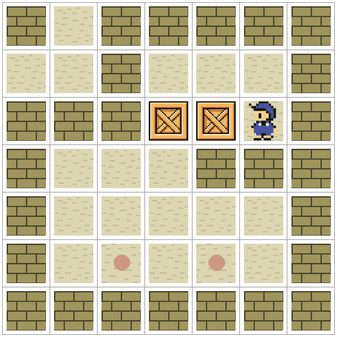This library is under development by Tom Silver and Rohan Chitnis.
Please see our paper describing the design decisions and implementation details behind PDDLGym.
The following PDDL features are not yet supported:
- Hierarchical types (blocked by: parsing)
- Equality (blocked by: parsing and inference)
- Quantifiers (forall, exists) and disjunctions (ors) (blocked by: inference)
Several PDDL environments are included, including
- Sokoban
- Depot
- Blocks
- Keys and Doors
- Towers of Hanoi
- "Minecraft"
- "Rearrangement"
- "Travel"
- "Baking"
(Environments in quotes indicate ones that we made up ourselves. Unquoted environments are standard ones whose PDDL files are available online, with light modifications to support our interface.)
Please get in touch if you are interested in contributing! Correspondence: tslvr@mit.edu and ronuchit@mit.edu.
First, set up a virtual environment with Python 3. For instance, if you use virtualenvwrapper, you can simply run mkvirtualenv --python=<path to Python 3> pddlgymenv. Next, run pip install -r requirements.txt to install dependencies. Now you should able to run the random agent demos in demo.py.
To be able to run the planning demos in demo.py, install Fast-Forward. Set environment variable FF_PATH to the ff executable, wherever you install it.
import gym
import pddlgym
import imageio
env = gym.make("PDDLEnvSokoban-v0")
obs, debug_info = env.reset()
action = env.action_space.sample()
obs, reward, done, debug_info = env.step(action)
img = env.render()
imageio.imsave("frame1.png", img)
from utils import run_planning_demo
import gym
import pddlgym
# See `pddl/sokoban.pddl` and `pddl/sokoban/problem3.pddl`.
env = gym.make("PDDLEnvSokoban-v0")
env.fix_problem_index(2)
run_planning_demo(env, 'ff', verbose=True)
Create a domain PDDL file and one or more problem PDDL files. (See important notes below.) Put the domain file in pddl/ and the problem files in pddl/<domain name>. Make sure that the name of your new domain is consistent and is used for the domain pddl filename and the problem directory.
Note 1: Only a certain subset of PDDL is supported right now -- see "Status" above.
Note 2: PDDLGym requires that certain predicates are special "predicate actions". For example, in Sokoban, we add a (Move ?dir - direction) predicate. Action predicates must be incorporated in four places:
- Alongside the typical predicate declarations in the domain file.
- In a space-separated list of format
; (:actions <action predicate name 1> <action predicate name 2> ...)in the domain file. (Note the semicolon at the beginning!) - One variable-grounded action predicate should appear in the preconditions of every operator in the domain file.
- In each problem file, all possible ground actions should be listed alongside the other :init declarations.
See
pddl/sokoban.pddlandpddl/sokoban/problem1.pddlfor an example to follow.
The rationale for distinguishing actions from operators is related to the boundary between agent and environment. This project views PDDL operators as collectively implementing a transition model, which is part of the environment and unknown to the agent. Actions are the things passed from the agent to the environment, like motor commands on a robot. Operators describe the environmental consequences of the agent's actions. For instance, a moveto command may only be parameterized by a target pose from the perspective of the agent, but internally to the environment, it must also be parameterized by the current pose because a literal must be created specifying that the agent is no longer at this current pose.
- Implement a render function in a new file in
rendering/. For example, inrendering/rearrangement.py, implementrender(obs, *args, **kwargs), whereobsis a set of literals. Updaterendering/__init__.pyto import your new function.
- Update
__init__.pyto register your new environment. For example,register_pddl_env("rearrangement", rearrangement_render).
Please use this bibtex if you want to cite this repository in your publications:
@misc{silver2020pddlgym,
title={PDDLGym: Gym Environments from PDDL Problems},
author={Tom Silver and Rohan Chitnis},
year={2020},
eprint={2002.06432},
archivePrefix={arXiv},
primaryClass={cs.AI}
}
